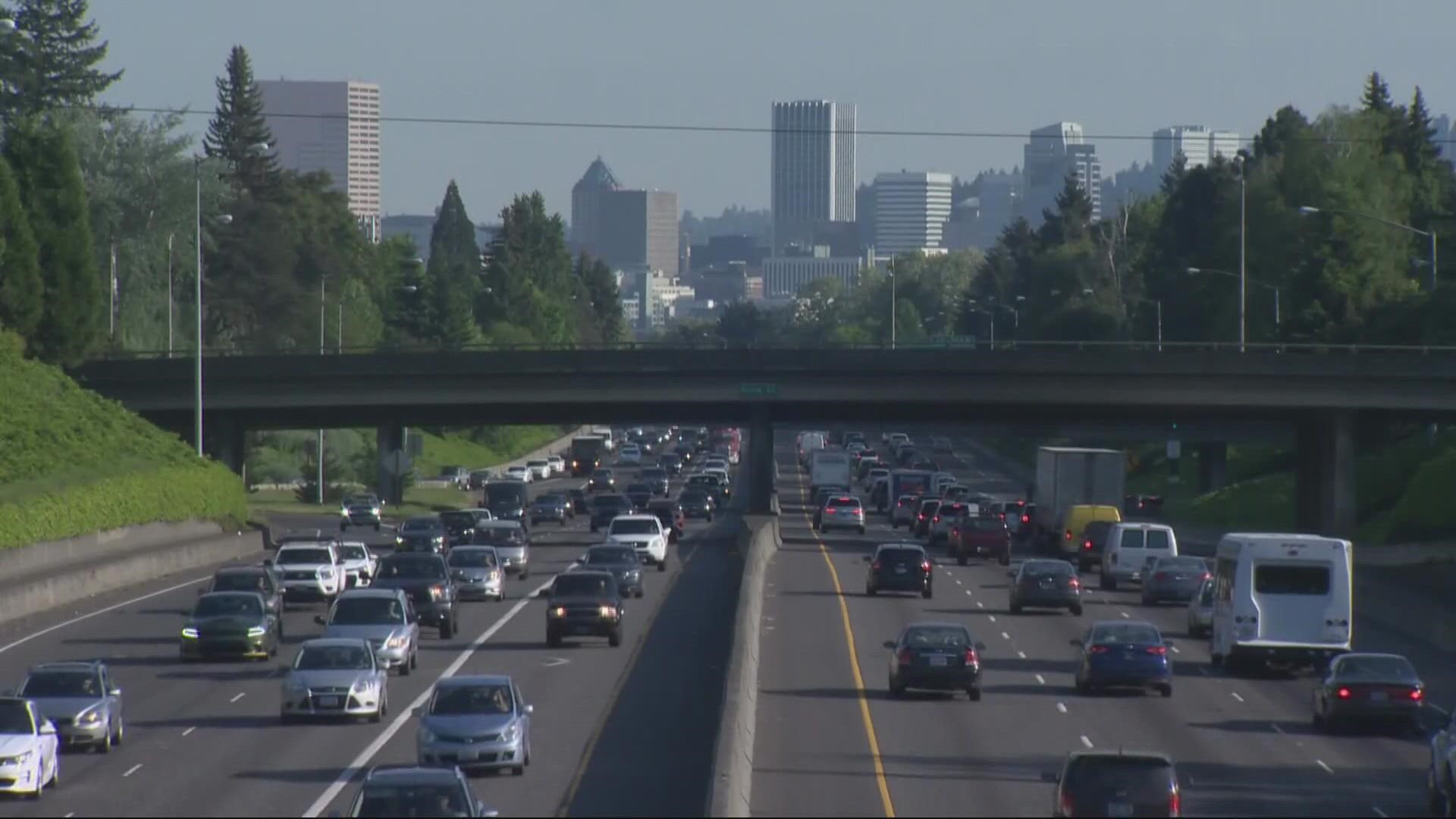PORTLAND, Ore. — The I-5 Rose Quarter expansion project now has a clearer vision, but it could take years and more than $1 billion to get it done.
The Oregon Transportation Commission (OTC) moved forward last week in recommending the "Hybrid 3" version of the proposal, which in addition to a new lane in each direction, includes covers or "caps" over spans of I-5. These covers would allow development of buildings and businesses on top of a tunneled interstate below.
"A reimagined Albina [neighborhood]," described Ericka Warren, a strategic advisor for the project.
The Historic Albina Advisory Board supports the covered highway proposal. The Albina neighborhood has faced a history of redlining, policies and development that drove out and financially hurt communities of color.
"This is an opportunity to restore some of the harms on the Black community in Portland," Warren said during a public meeting on Aug. 31.
The project is part of an Oregon House transportation funding bill, passed in 2017. The legislation directed the Oregon Department of Transportation (ODOT) to build the Rose Quarter Project, providing about $500-700 million in funding.
However, the plan to cap parts of the interstate is more expensive than initial estimates, increasing the cost to between $1.2-1.25 billion, according to OTC.
OTC's commissioners advanced the plan on the condition that ODOT submits a project funding plan by December 1, 2021.
As part of OTC's directive, ODOT may seek funding from federal, state and/or the City of Portland, Metro, Multnomah County, TriMet and other organizations in Portland.
"We are trying to do a number of things at once with this project," OTC chair Robert Van Brocklin said in a news release. "Reduce Rose Quarter congestion, increase safety and mobility, involve minority business enterprises in constructing the Project and support community interest in covering a larger section of the freeway to increase redevelopment opportunities for Albina. Advancing this visionary project design will require substantial additional funding."
Some groups oppose the project for environmental reasons.
Aaron Brown with the group No More Freeways PDX supports the freeway caps that could benefit Black communities and businesses, but worries more lanes underneath will simply lead to more traffic, and thus more pollution in the neighborhood.
"I agree traffic sucks. We could be robustly investing in transit, more buses and MAX lines and sidewalks to fix up the dangerous streets that ODOT owns," Brown said. "Forty percent of Oregon's carbon emissions come from transportation, and it was 116 degrees this year. We need to be investing in a Green New Deal, not a gray old deal."
The Hybrid 3 proposal would also involve these updates:
- Changed locations of various freeway entrance and exit ramps
- Reconnecting of the street grid above the highway
- An added northbound and southbound 1.7-mile auxiliary lane from the I-5/I-84 interchange to the Fremont Bridge
"To build Hybrid 3, we will need special help from Congress," said Commissioner Julie Brown. "We are very unlikely to have the money to build the larger project cover without a major federal financial contribution."
OTC said Governor Kate Brown encouraged approval of the Hybrid 3 option after discussions with local leaders.

